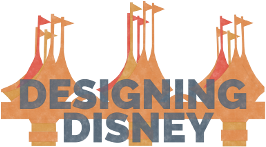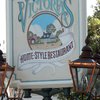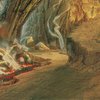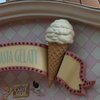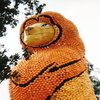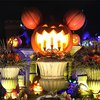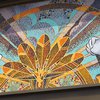Designing Fantasyland – Pizzeria Bella Notte
Pizzeria Bella Notte is an Italian restaurant located just behind the entrance to Fantasyland at Disneyland Paris. It pays tribute to the 15th animated film in the Walt Disney Animated Classics series “Lady and the Tramp” (1955).

In this article, Walt Disney Imagineer Tom Morris (show producer, Fantasyland, Disneyland Paris) takes us on a tour of the restaurant and tells us how this marvelous place came to be.

Pizzeria Bella Notte’s façade features elements of various architectural styles that can be found throughout Italy. By creating a pastiche of Italian sites, mister Morris wanted to give guests a quick trip around that country.

Imagineers painted the upper parts of the façade in a much paler hue than the lower parts to make the building appear larger than it actually is and to accurately depict how old buildings sometimes fade.

The design of the middle part of the façade was inspired by the canal facing buildings in Venice. It is a little crooked, just like many houses in water based cities of which the soil beneath can not bear the weights imposed.

On the left side of the facade, one may notice peculiar “M” shaped merlons. This is something that architectural designer, Walt Disney Imagineer Ron Bowman, really liked from his observations of old Italian castles.

These “M” shaped merlons are also called swallowtail or “Ghibelline” battlements and can be seen in cities such as Siena, Pisa and Pistoia. The square or rectangular merlons are nicknamed “Guelph” battlements. The names “Ghibelline” and “Guelph” refer to the members of two opposing factions in Italian politics during the Middle Ages.

The split between the Ghibellines and Guelphs caused chronic strife within the cities of northern Italy in the 13th and 14th centuries. Families distinguished their factional allegiance by the architecture of their palaces, towers and fortresses. Ghibelline structures had swallow-tailed battlements, while those of the Guelphs were square.

On the right side of the restaurant’s facade, there is a beautiful “trompe l’oeil” wall painting. A trompe l’oeil is a painting which is cleverly designed to trick people into thinking that objects represented in it are really there. These paintings can typically be found in Southern Europe.

Special outdoor lighting fixtures were installed in the shrubs in front of the building. They resemble the famous Venetian striped mooring poles.


Pizzeria Bella Notte’s interior looks like a courtyard of a large Italian villa at night time. Transforming the setting so that when a guest walks into a space during the day it shifts to nighttime is a technique often used by Walt Disney Imagineering.

The interior of the restaurant is a mix of different styles because mister Morris wanted to create a fantasia of playful spaces that invites exploration and picture taking.

In order to delineate the seating area from the main thoroughfare and to subtly lead guests to the service counters, Imagineers used different types of floor tiles throughout the facility.

Inside the restaurant, there are a few noteworthy decorative elements.



First there is the wagon wheel that was turned into a chandelier. According to mister Morris, this reinforces a certain folk nature and resourcefulness of the proprietors of the house.

The fireplace has been constructed as if from salvaged parts of a Venetian villa balcony.


The masks and figures that can be seen in the photos below refer to the northern Italian “commedia dell’arte”. Imagineers showcased them to lend the restaurant a festive atmosphere.


Commedia dell'Arte was a popular form of comedy employing improvised dialogue and masked characters that flourished in Italy from the 16th to the 18th century. The Harlequin was one of its primary characters.

Pizzeria Bella Notte also features several references to the wine-growing areas of Italy. A small statue of Bacchus, the Roman god of wine and revelry as seen in Disney’s 1940 feature film Fantasia, was put on display.

And in one part of the building, wine barrels were hung from the ceiling. Mister Morris recalls that this was inspired by a couple of restaurants that he and his team visited in the late eighties while doing research for the Euro Disney project.

The pizzeria’s outdoor seating area has been beautifully decorated with colorful ceramic mosaics. Some of the pieces of tile originate from Mary Blair’s mural that previously adorned the Star Tours building in Disneyland California.





Credits
Photos Nr 6, 7, 16, 17, 19, 26, 27, 28, 29, 30: Bert Snyers
